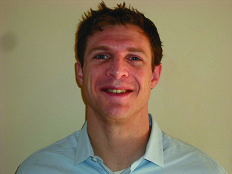By Bob Gorinski, DPT
You Have Probably Made These Errors In Searching Online For Help!
Every day I witness the challenges that my physical therapy clients face when they turn to Dr. YouTube or Nurse Google for help with typical muscle, joint, and movement pains. Navigating the vast sea of recommended exercises and procedures requires some context in the basic sciences and insight in the realm of health and fitness.
In a recent survey done by the American Academy of Orthopaedic Surgeons, 65% of patients with Internet access reported using the Internet for orthopedic information regarding their physical aches and pains. Forty-three percent found the information “very useful” and 56% found it “somewhat useful.”
Of course, the challenges of finding, understanding, and appropriately implementing credible online advice is not unique to my profession. Due to lack of insight and context in the realm of plumbing, I recently made a simple issue with the kitchen sink turn into a drywall issue on the basement ceiling. Thanks a lot, YouTube!
Here are three common ways we fail ourselves by leaning too heavily on the Internet. These examples do not include all the misinformation and sales gimmicks out there. Instead, I’m going to address three less obvious errors that we make even when the information involved is credible and technically correct.
1. Incorrect Diagnosis
A patient recently reported that weeks of stretches for the intense pain on the side of her thigh were not helpful. Upon further inquiry I learned that she had searched the Internet for iliotibial band (ITB) tendonitis because her sister experienced a similar problem in the past. After evaluating her, we discovered that she was dealing with a pinched nerve in her lower back referring pain to that area of the leg.
Make sure your diagnosis is correct. Otherwise you’re barking up the wrong tree.
2. Correct Diagnosis, Incorrect Treatment
I’ve had plenty of patients correctly identify their problems but apply the wrong treatment. In the example above, a Google or YouTube search of “ITB tendonitis” will provide thousands of recommendations for stretches, foam rolling, and massage techniques to treat this condition. But many times, the pain improves far more from exercises focused on building trunk and core strength and addressing subtle asymmetry in walking and running. The appropriate exercises are not elusive or hidden, but they do not turn up under a typical online search.
Do not assume that having the correct diagnosis is an automatic pass to the right treatment advice for your specific circumstances.
3. Correct Diagnosis, Correct Treatment, Wrong Timing
Continuing with our example above, the person correctly identifies their problem with an online search and comes across good advice. They proceed to implement exercises like various squats, lunges, and running drills, only to find that these activities worsen the pain.
The error here is applying the right exercises at the wrong time. The person in this example will benefit from those exercises only after a period of performing lower-level corrective exercises before jumping into full-weight-bearing movements like squats and lunges. They may need to temporarily rest from running altogether, then slowly build back with altered form.
In contrast, other clients with persistent pain spend months doing only the easier non-weight exercises like leg raises and thera-band hip rotation, only to have the problem return when they resume running or hiking. These clients need to be challenged with higher level weight-bearing exercises to fully build resiliency and strength to bridge the gap toward repetitive high-impact activities.
Give attention to the phase of recovery. Exercises and treatments in one phase of recovery are not optimal in other phases.
The moral of the story is to recognize the limits of Internet searches because even good information can easily be applied incorrectly. The above errors are common pitfalls that I witness in orthopedic physical therapy, one realm of life familiar to me. I’m sure this happens in every discipline, and none of us are immune. Don’t be afraid to seek the help of a specialist where you need it!
RESOURCES
Pew Internet & American Life Project, a Project of the Pew Research Center
Googles Top Results are not always on Target. NPR Project Health https://www.npr.org/sections/health-shots/2017/07/17/537711453/seeking-online-medical-advice-googles-top-results-arent-always-on-target
Current trends and patient perceptions in Internet use by orthopedic patients.
https://www.ncbi.nlm.nih.gov/pubmed/28983221

By Bob Gorinski, DPT
Full Reps Physical Therapy
Bob Gorinski, DPT, is a physical therapist and owner of Full Reps Physical Therapy in Camp Hill, PA. He specializes in orthopedic rehabilitation and has provided detailed personal training to athletes, young and old, to maximize their physical performance and prolong their years of high level function. He loves helping others feel, look, and perform their best! You can reach him by email at bobg@fullrepstraining.com and on the web at fullrepstraining.com.
Featured in Commercial Real Estate Review – First Quarter 2018

